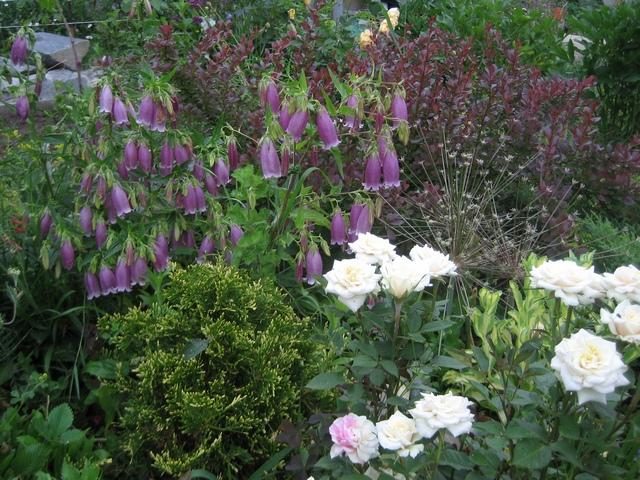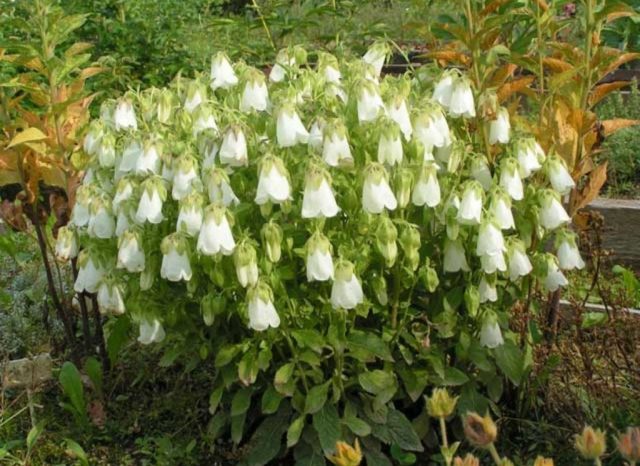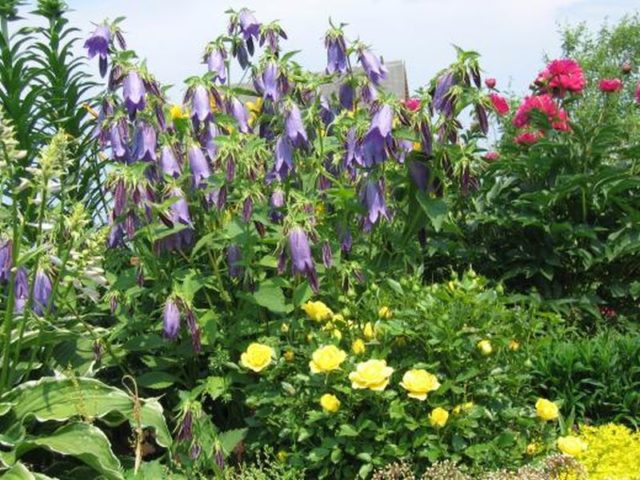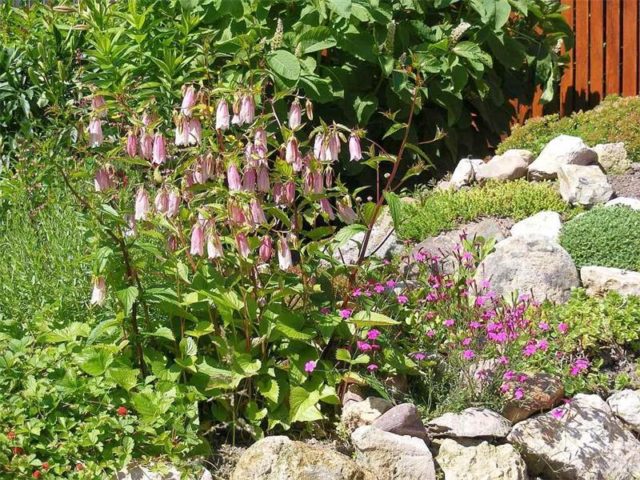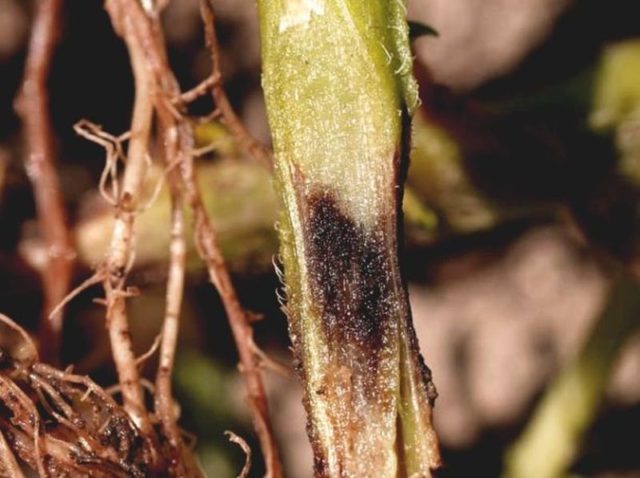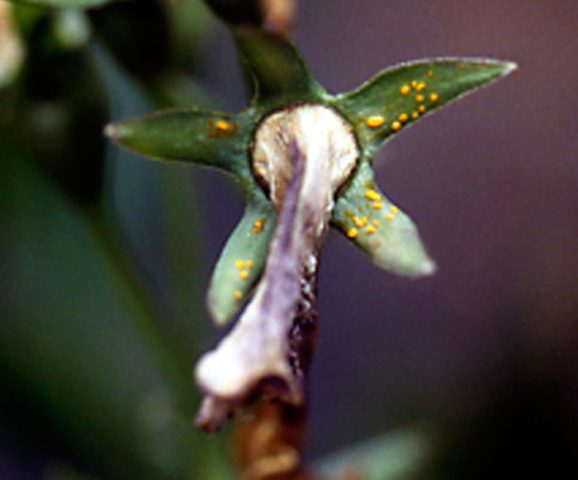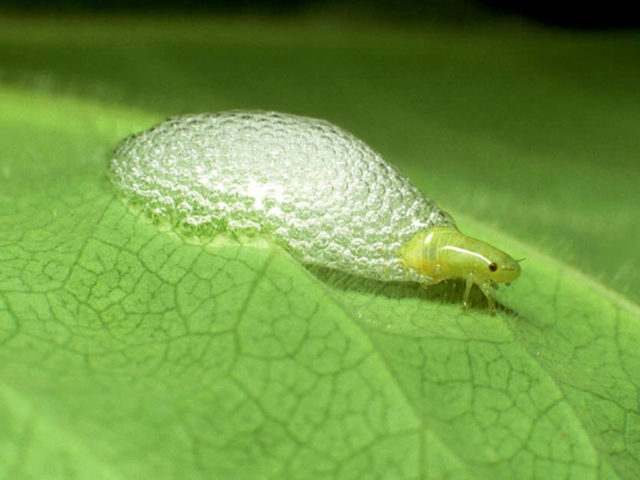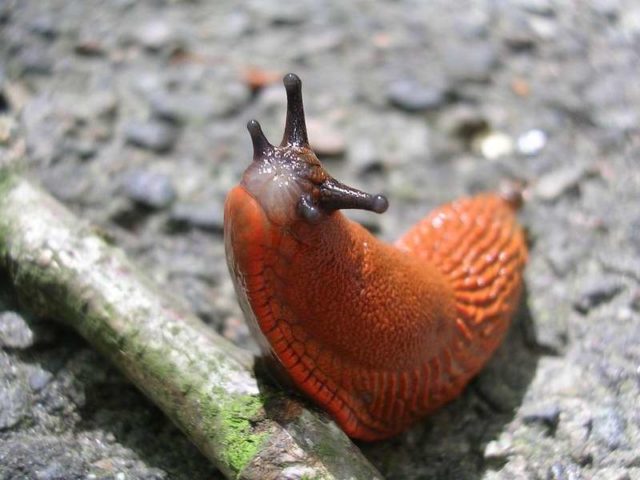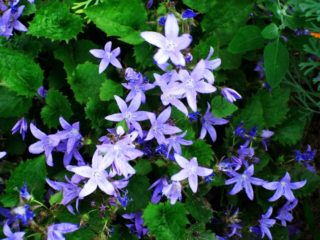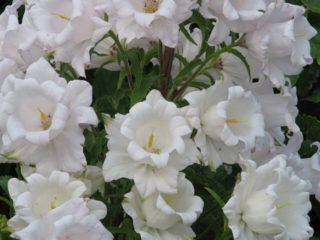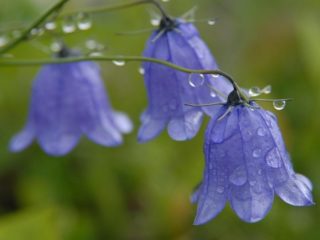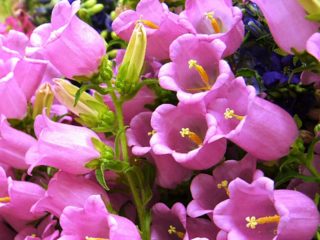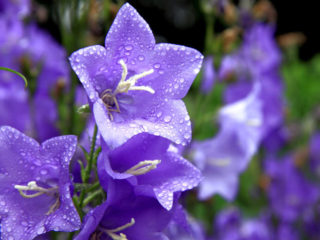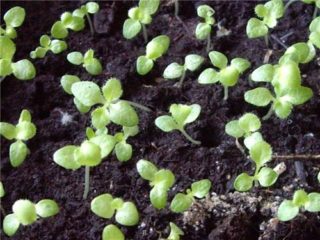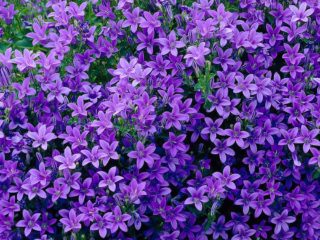Content
The dotted bell is a rather rare ornamental plant in nature. At the same time, numerous cultivars are available to everyone, it is interesting to study their features and requirements.
Point Bell Description
The dotted bell (Latin Campanula punctate) is a herbaceous perennial plant from the genus of the same name. The straight stem of a cylindrical shape is slightly pubescent, branches in the upper part. The leaves are ovoid and pointed, hairy, on reddish petioles, paler below, and bright green above.
In height, a perennial in nature grows up to 50 cm, decorative varieties can reach 70 cm. The bushes are quite spreading, in width they can grow up to half a meter or more. The plant develops quickly enough, it can release numerous lateral underground shoots and go beyond the allotted area.
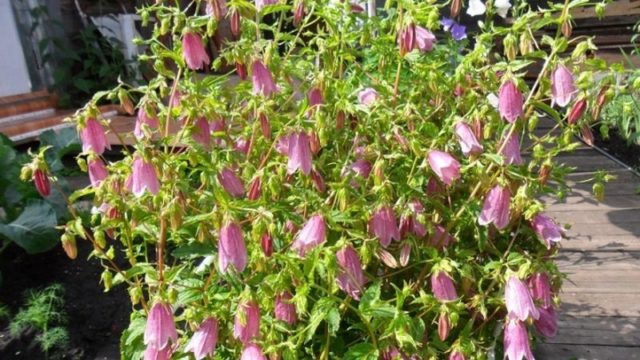
The dot bell rises only half a meter, but can grow very wide
Flowering begins in July and can last until late summer. The buds are large, up to 5 cm, drooping on long pedicels, slightly pubescent. One wild perennial can have up to 10 flowers. Cultivars produce up to 30 buds on a bush. The dotted bells are goblet in shape, elongated, slightly swollen in the middle part, with the edges of the petals bent outward. In color, they can be white, blue, purple, pink and ink, depending on the specific variety. In August-September, the flowers are replaced by fruit pods with seeds.
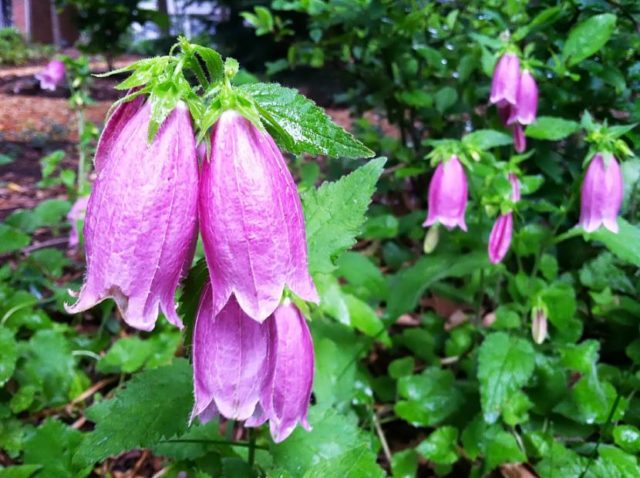
The buds of the dotted bell have an extension in the middle.
A moderately winter-hardy plant is able to withstand temperatures down to - 23-30 ° C. Prefers sunny areas, although it also perceives well the shade. The splendor of flowering is determined precisely by the amount of light; in open places, the bell blooms more abundantly. The level of soil moisture affects the decorativeness of the culture; perennial develops poorly on swampy soil.
Under natural conditions, the dotted bell grows mainly in the Far East in Russia, as well as in Japan, Korea and northeastern China. You can see it in larch and oak forests, in birch forests and on the banks of rivers. It is recommended to grow cultivars in the middle lane, in the Urals and in Western Siberia. In colder regions, the plant can also develop successfully, but it will require careful shelter.
The best varieties
Decorative varieties of the dotted bell are distinguished by abundant flowering and a variety of colors. The most popular and favorite varieties of gardeners can be distinguished.
Pink Red
The beautiful Pink Red bell rises up to 50 cm above the ground and blooms from June to August. The buds of the variety are dull pink in color, bright purple dots are noticeable in the core. The flowers are goblet in shape, drooping, collected in panicle inflorescences.
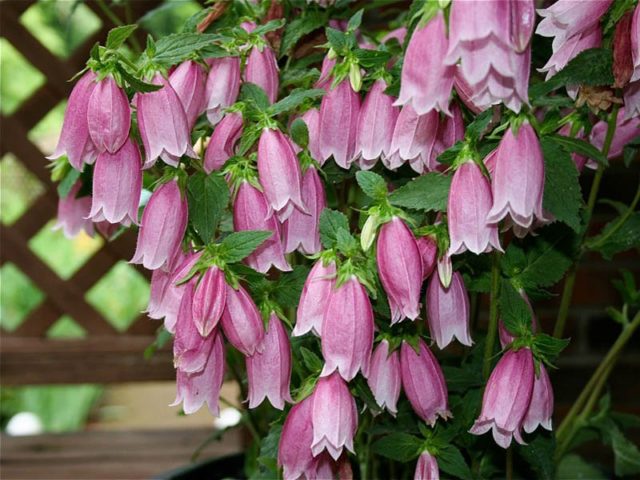
Pink Red bell buds reach 7 cm in length
Garland
Dot bell Garland from the Russian company Plazmas is a medium-sized perennial up to 40 cm in height. During the decorative period from June to August, the buds densely wrap around the bush from all sides, hence the name.The flowers are white-pink in shade, rather large - about 8 cm wide.
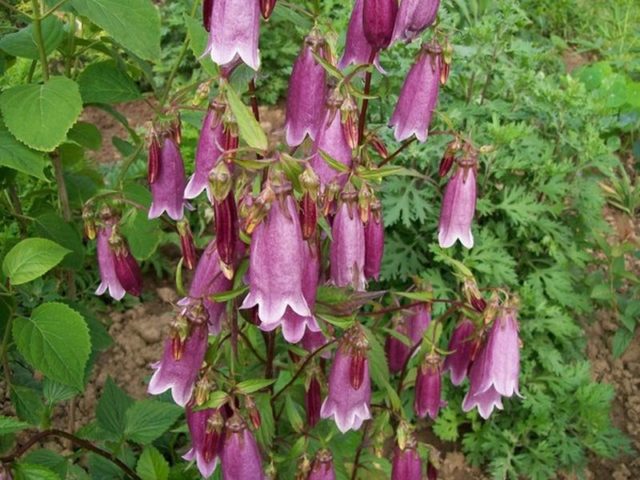
The garland prefers to grow in moderately shaded areas with good moisture
Silver Bells
Bell Silver Bells is a variety with a height of about 40 cm. The buds are large, glassy in shape, delicate milky pink with purple dots. The decorative period begins in June and lasts until the end of summer.
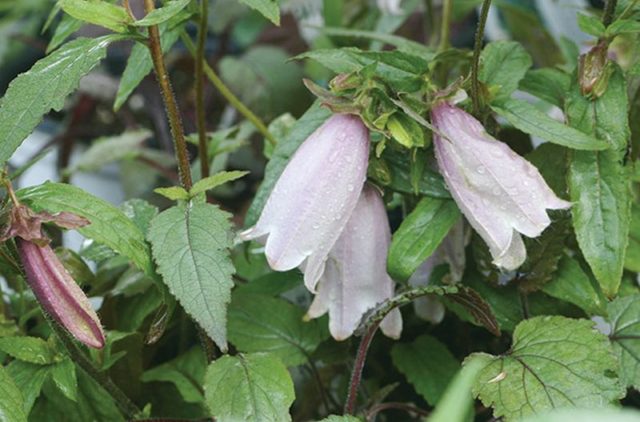
Silver Bells has developed roots and grows very well
Alba Nana
The dotted bell Alba Nana is a miniature cultivar that grows only 20 cm. From June to August it produces creamy white flowers with pink dots arranged in wide stripes. Not only the buds of the plant look beautiful, but also red long petioles and light green leaves.
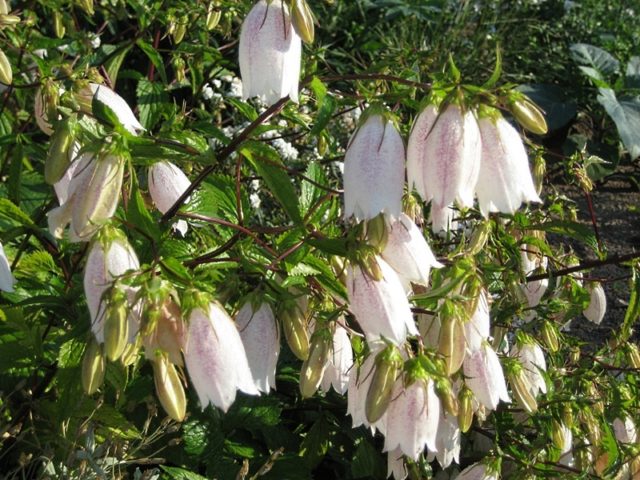
Alba Nana is one of the most compact spotted bell varieties
Ash Sense
Purple Sensation is a medium-sized variety about 50 cm tall. The leaves of the perennial are dark green, glossy, the buds are of a purple hue, with a standard glass-like shape. The plant blooms in June and can remain decorative until August.

Ash Sensation can be planted in the sun, flowers are not subject to fading
Cherry Belz
Another beautiful dark colored strain is Cherry Bells. In June and July, it produces large cherry-red flowers with a decorative white border. In height, the bush rises to 60 cm, prefers illuminated and semi-shady areas.
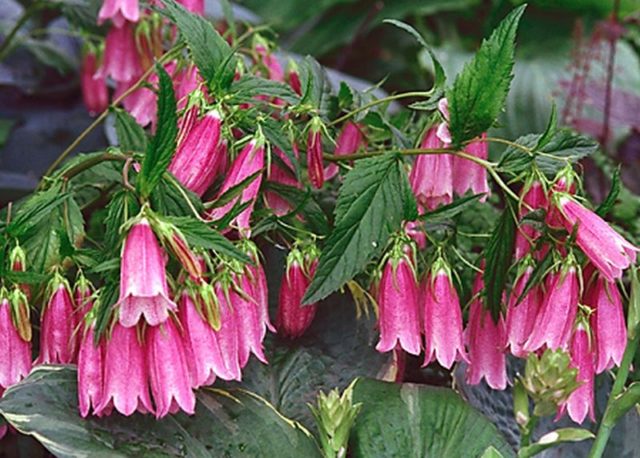
Cherry Belz is best planted in the southern regions, it winter comfortably at temperatures down to -23 ° С
Pantaluns
Bellflower Pantaloons is a beautiful variety with large semi-double flowers of a purple-pink hue. It begins to bloom in July and remains decorative until August, it rises by 60 cm in height, but at the same time it can spread up to 90 cm.
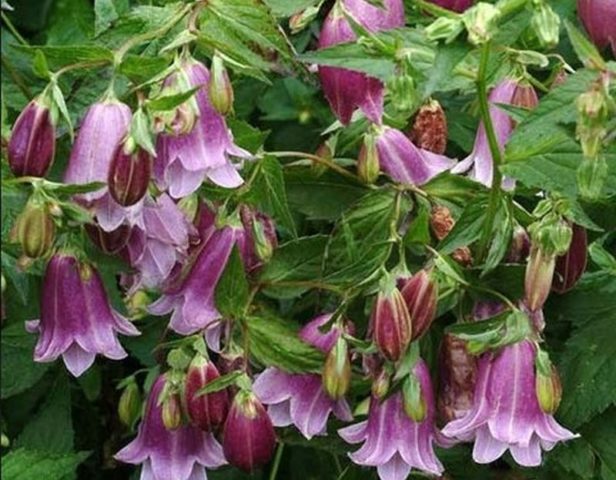
The peculiarity of the bell Pantaluns is the expansion in the upper part of the goblet buds
Dionysus
The Dionys bell is a short perennial plant about 30-50 cm tall. In June and until the end of summer, it brings large wine-colored buds up to 7 cm, blooms very abundantly, the greenery is almost hidden under the flowers.
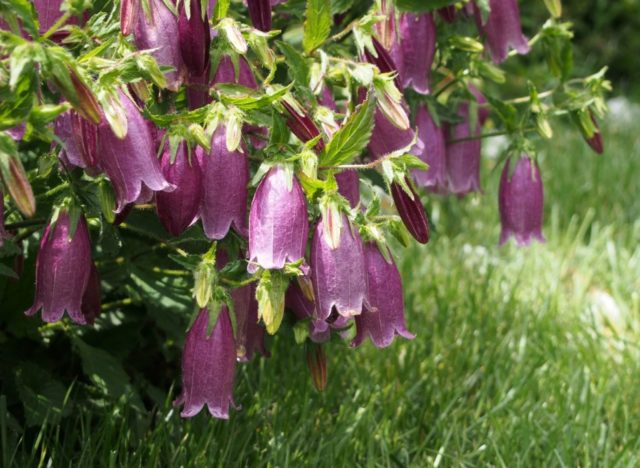
The dotted bell Dionysus feels good in the sun, but can develop in the shade as well.
Hot Lips
The low variety Hot Lips rises an average of 30-50 cm. It blooms in June and July, producing pale purple goblet buds, lighter on the outside and darker on the inside.
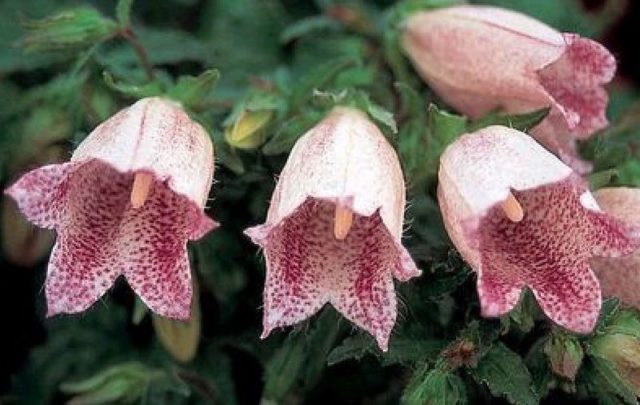
Hot Lips flowers are densely covered with brownish "splashes"
Sarastro
The Sarastro dot bell extends up to 60 cm above the ground and opens from June to July. The buds of the variety are blue, goblet, with a noticeable expansion in the middle part. Grows best in shaded areas on fertile soils.
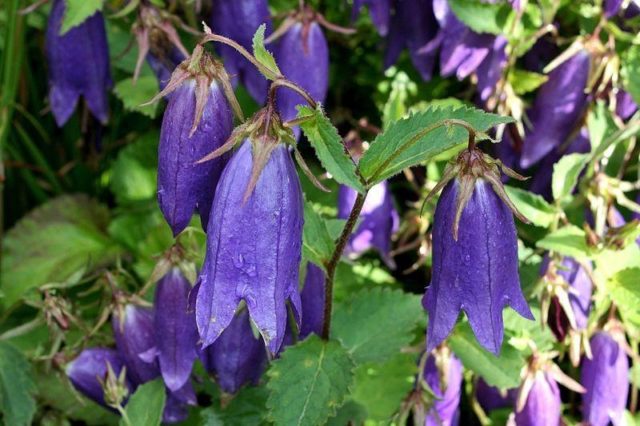
The flowering of Sarastro can be slightly extended if the wilted buds are cut off in time
Application in design
A perennial plant is widely used in landscape design. It can be planted:
- in shady places of the site;
Dot bell grows well in moderate light
- as a tapeworm;
An overgrown dotted bell looks spectacular in free space
- in flowering flower beds next to other plants;
The bell is combined with most low-growing and medium-sized perennials
- as part of alpine slides and rockeries.
Low-rise dotted bell brings to life austere rocky landscape
Roses, phloxes, sage, cornflower, lilies, lupins and other garden flowers will become good neighbors. An unpretentious perennial meets the requirements of most plants.
Reproduction methods
Basically, 2 methods are used to propagate a dotted bell:
- seminal;
- division of the bush.

Most often, the dotted bell is propagated by seeds.
Growing seeds is the most popular, the material sprouts easily and quickly.The division is used for adult perennials every 3-4 years, it is with such a frequency that the plant is recommended to be transferred to a new place.
Planting and caring for the dot bell
It is not difficult to plant a bell sprouted from seeds or an adult cut in the ground in the garden. The main focus should be on site selection and soil preparation.
Recommended timing
The dotted bell must be planted during the warm season. Germinated seedlings are usually transferred to the soil at the end of May, after return frosts. Delenki are rooted both in late spring and in autumn after the leaves have wilted.
Site selection and soil preparation
Planting a dotted bell is best in a lit area or in little shade. The soil should be moderately moist, perennials can grow even near water bodies, but it is important to ensure that the site is not swampy. The culture is growing rapidly, so you need to take care in advance that there is enough free space around.
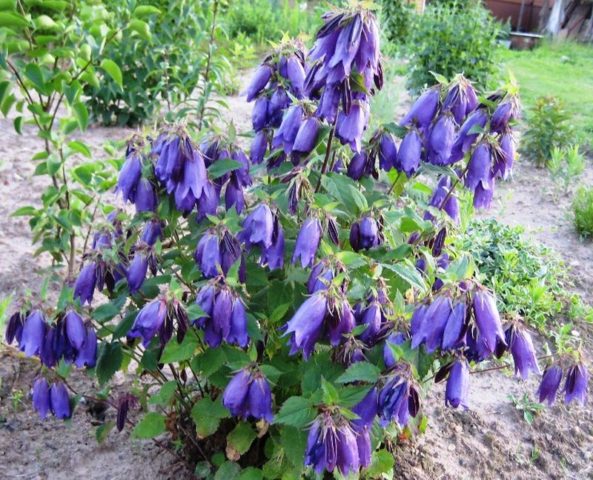
You need to plant a dotted bell freely, it will grow in breadth
The soil is required loose, with a pH level close to neutral. If the soil is too dense and acidic, you need to dig it up and add peat, humus and sand to improve aeration and nutrition.
Landing algorithm
A few days before the transfer of the dotted bell into the ground, a shallow hole is dug for it, it should be 2 times the size of the roots. A small layer of drainage is poured onto the bottom - sand, broken brick or crushed stone. Then the hole is filled to the middle with a soil mixture of sand, turf, peat and humus, and complex minerals are added - phosphorus and potassium with a small amount of nitrogen:
- Immediately before planting, the selected dotted bell is carefully examined and made sure that its roots are healthy and strong.
- For a couple of hours, a cut or seedling can be soaked in water.
- Then the plant is transferred to the prepared recess, trying not to crush the underground part, and covered with soil to the end.
After planting, the ground is lightly tamped, watered well and sprinkled with sand in a circle.
Watering and feeding schedule
In the spring and throughout the fall, the dotted bell has enough moisture from natural precipitation. It is advised to water it only in the middle of summer in dry weather, at a time when it spends all its energy on flowering.
It is necessary to feed the dot bell in the spring after the snow melts; to build up the green mass, it will need nitrogen fertilizers. When forming buds, you can add phosphorus and potassium to the soil, and in October - throw peat or humus on the crop before wintering.
Loosening and weeding
Dot bell is often plagued by dense soil and weeds. Therefore, once a month, the soil is carefully loosened. During the process, the rake should not be immersed in the ground too much, since it is possible to damage the roots of the perennial. Loosening and weeding improves the flowering of the crop and also prevents the development of fungi and pest larvae.
Pruning
The dotted bell is a plant prone to rapid and abundant growth. During the warm season, it is necessary to remove lateral shoots in time, otherwise the perennial can capture the entire allotted area and go beyond it.
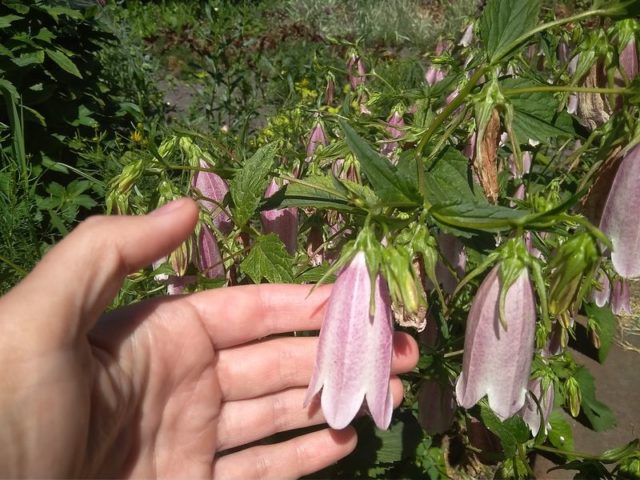
During flowering, you need to periodically remove dry buds, leaving only fresh
Also, during the summer, it is customary to cut off the dried buds on the stems. This helps to maintain the decorativeness of the perennial and also stimulates the development of new flowers. With the timely removal of wilted parts, the plant remains beautiful for much longer.
Preparing for winter
Blossoming of a dotted bell ends in September, and by mid-October it completely sheds its leaves. At this moment, the above-ground shoots must be cut flush with the ground, the next year new stems will grow.
Before the onset of cold weather, the bell is covered with a dense layer of humus or compost of about 10 cm, organic fertilizer increases the frost resistance of the culture and insulates the roots. On top, you can put fallen leaves or dry branches, they will serve as additional shelter.
Transfer
Once every 4-5 years, perennials are advised to be transplanted. To do this, the bush is divided with a sharply sharpened shovel, making sure that healthy roots and strong shoots remain on each part. Planting is carried out according to the standard algorithm at the end of spring, when the soil warms up, or in September, long before the first cold weather.
Diseases and pests
The dot bell has strong immunity, but it can suffer from fungi in rainy weather with a lack of sun. Most often he is struck by:
- rot of the neck and roots;
Bell rot develops against the background of waterlogging
- rust;
Orange rust build-ups are clearly visible on the green bell
If spots or traces of rot appear on the leaves and stems of the plant, you must immediately treat the bushes with fungicides - Fitosporin-M, Baktofit, Fundazol. Spraying is carried out 3 times at intervals of 2 weeks.
Of the pests for a dotted bell, the most dangerous are:
- slobbering penny;
Pennitsa feeds on the leaves of the dotted bell and interferes with its development.
- slugs.
Slugs can eat the dotted bell in rainy summers
Homemade garlic and pepper decoctions help well against pests with a small lesion. In advanced cases, you can use Aktara or Karbofos. To scare away slugs in a flower bed with bells, it is advised to scatter straw, mollusks avoid rough and thorny surfaces.
Conclusion
The spotted bell is rarely found in nature, but it is represented by many decorative varieties. It is easy to grow it on the site if you choose the right place and do not overmoisten the perennial.
